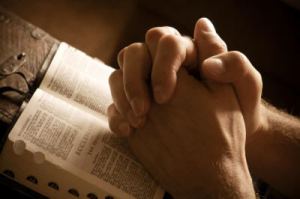Prayer
 “Notice that not once did Jesus make his disciples pray. he just kept on praying until they could contain their hunger no longer and asked Him to teach them how to pray.” Pat Lynch, Awakening the Giant
“Notice that not once did Jesus make his disciples pray. he just kept on praying until they could contain their hunger no longer and asked Him to teach them how to pray.” Pat Lynch, Awakening the Giant
Rebecca Nye quotes Pat Lynch in this chapter on spiritual practices to help those of us who love and spend time with children to perhaps shift our attitude when it comes to teaching children about prayer or how to pray. So often in our work with children we ask all the children in our circle to contribute during “prayers” or teach them all to say a particular prayer such as the Lord’s Prayer. While none of this is intrinsically bad, it is different from the way we usually approach things with adults. Nye writes, “with groups of adults exploring the Christian faith, current practice is usually to take a much more ‘only if you’d like to’ approach. (p. 57). In a Godly Play circle we work to create space for the child to pray, but we do not insist that everyone says something. I often will say, “Its always okay to pass, or simply pray quietly in your heart.”
Research indicates that it is more important for children to see the adults they love and trust praying, then for the adults to pray with children. That seems very counter-intuitive. We read about families who have “family night” when they pray and play games together, or families that do “Lenten devotions” each day with their children and we think, “That seems like a good idea.” Again, none of that is a bad idea, but what researchers have discovered is that even more influential is the kind of modeling a parent does.
Robert Wuthnow (1999) conducted a study with college students looking to discover what, if anything, made them reach for God as young adults. These were students at Princeton University who were active members of the Christian fellowship, or Jewish fellowship on campus. Many of them did speak about doing “religious activities” with their families such as attending worship or retreats, but what seemed vastly more important were what they saw the adults in their world doing when it came to God. Some spoke of their grandmother sitting in her chair praying the rosary and attending Mass every day. Others spoke of their father reading his Bible in the living room. The students said that this kind of modeling helped them to reach for God as adults, trusting that it was something worth doing since they had seen it as a source of strength for their parents or grandparents.
My own children grew up as double P-K’s (Priest-kids). Church was kind of the family business. However, I often wonder if the most powerful influence in their lives was watching their father pray. Paul is very disciplined, often praying both morning and evening prayer daily. When the children were little they would often find him sitting in bed in the early morning hours praying (with me fast asleep beside him). It was a ritual that I think helped ground our entire household. Once when my parents were visiting our daughter went into wake them up before she came into our room. As they visited she decided she needed to ask her Dad something and jumped up to to our room. My parents said, “Oh no. Wait. Give Mom and Dad a little more time to sleep.” She scoffed at them and said, “I’m sure Dad’s already up and praying.” I was surprised that she realized that was what he was up to, and began to wonder how that might impact her later.
Nye goes on her chapter on prayer to describe some ways that we can pray with children, paying particular importance to the six general principles we have already discussed (Space, Process, Imagination, Relationship, Intimacy, and Trust). Most important is her reminder that prayer can take many shapes and forms, and be attentive to those times in our child’s life so that we don’t intrude. In our Godly Play room we model this respect by reminding the children to avoid shouting or bumping into people, “Because someone might be talking to God and we don’t want to disturb them.” This alone, writes Nye, “builds up a powerful expectation of the reality and mystery of what prayer is.” (p. 64)
Questions to ponder:
- What is your best experience of prayer with children?
- What is your worst?’
- How will your understanding of children’s spirituality help you approach prayer now: with children? in your own prayer life?
